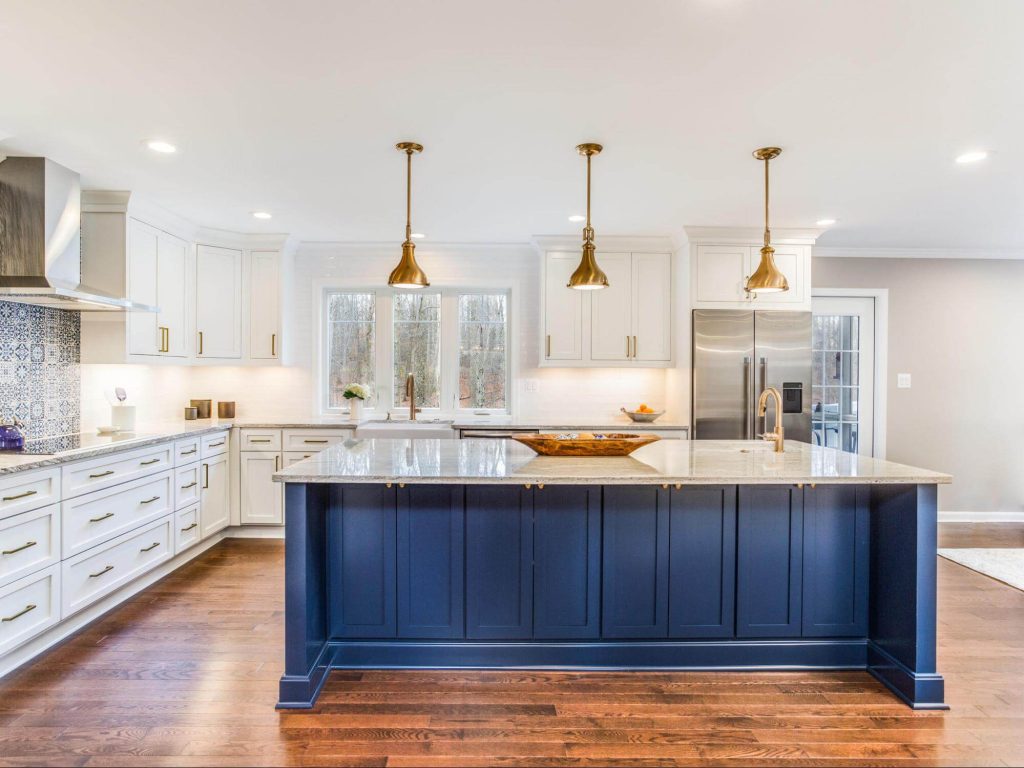Combining different cabinet styles in your kitchen can create a unique and visually appealing aesthetic, blending various elements to reflect your personal style and preferences. Here’s how you can effectively mix cabinet styles to achieve a cohesive yet distinctive look.
Choose a Dominant Style: Begin by selecting a dominant cabinet style that sets the tone for your kitchen. This style will serve as the foundation around which you will integrate contrasting elements. For instance, opt for sleek, modern cabinets with clean lines and minimalist hardware if you prefer a contemporary feel. This dominant style will anchor your design while allowing you to play with other complementary styles.
Introduce Contrasting Elements: To add interest and character, introduce cabinets with contrasting styles. For example, consider incorporating rustic, distressed wood cabinets or open shelving units to contrast against the modern, sleek cabinets. This mix creates visual intrigue and breaks up the monotony of a single style, making your kitchen more dynamic.
Blend Colors Thoughtfully: While mixing styles, pay attention to color coordination. Harmonizing colors across different cabinet styles helps maintain coherence. For instance, if your dominant cabinets are white or light-colored, you might introduce darker shades or natural wood tones in the contrasting cabinets or open shelves. This creates a balanced look where each style element enhances the overall aesthetic without overwhelming the space.

Focus on Functional Zones: Divide your kitchen into functional zones and use cabinet styles to define each area. For instance, use traditional cabinets with ornate details around the cooking area to create a cozy, classic feel. In contrast, use contemporary, handle-less cabinets in the storage and prep zones for a streamlined look that emphasizes efficiency and modernity. This zoning approach not only enhances functionality but also guides your choice of cabinet styles for each specific area.
Mix Materials for Texture: Incorporating different materials adds texture and depth to your kitchen design. Pair glossy, lacquered cabinets with matte finishes or textured surfaces to create visual interest through tactile contrasts. Additionally, combining materials like wood, glass, and metal accents can enrich the visual texture, making your kitchen more inviting and visually appealing.
Consider Architectural Harmony: Take into account the architectural style of your home when blending cabinet styles. While contrast is beneficial, ensuring architectural harmony ensures that your kitchen integrates seamlessly with the rest of your living space. For instance, if your home has a traditional architectural style, mixing classic and vintage-inspired cabinet styles would complement the overall ambiance.
Pay Attention to Hardware and Accents: Hardware such as knobs, handles, and pulls can unify different cabinet styles. Opt for cohesive hardware finishes across all cabinets, even if the styles differ. This small detail ties the various elements together, creating a cohesive look that feels intentional and well-thought-out. Similarly, coordinating accents like lighting fixtures and backsplash materials further enhance the cohesive aesthetic of your mixed cabinet styles.
Experiment with Open Shelving: Incorporating open shelves alongside closed cabinets adds versatility and an airy feel to your kitchen call today for a quote. Use open shelves to display decorative items, cookbooks, or plants, balancing the structured look of cabinets with a more relaxed, open aesthetic. This combination not only adds functionality but also allows you to showcase your personal style in a practical manner.